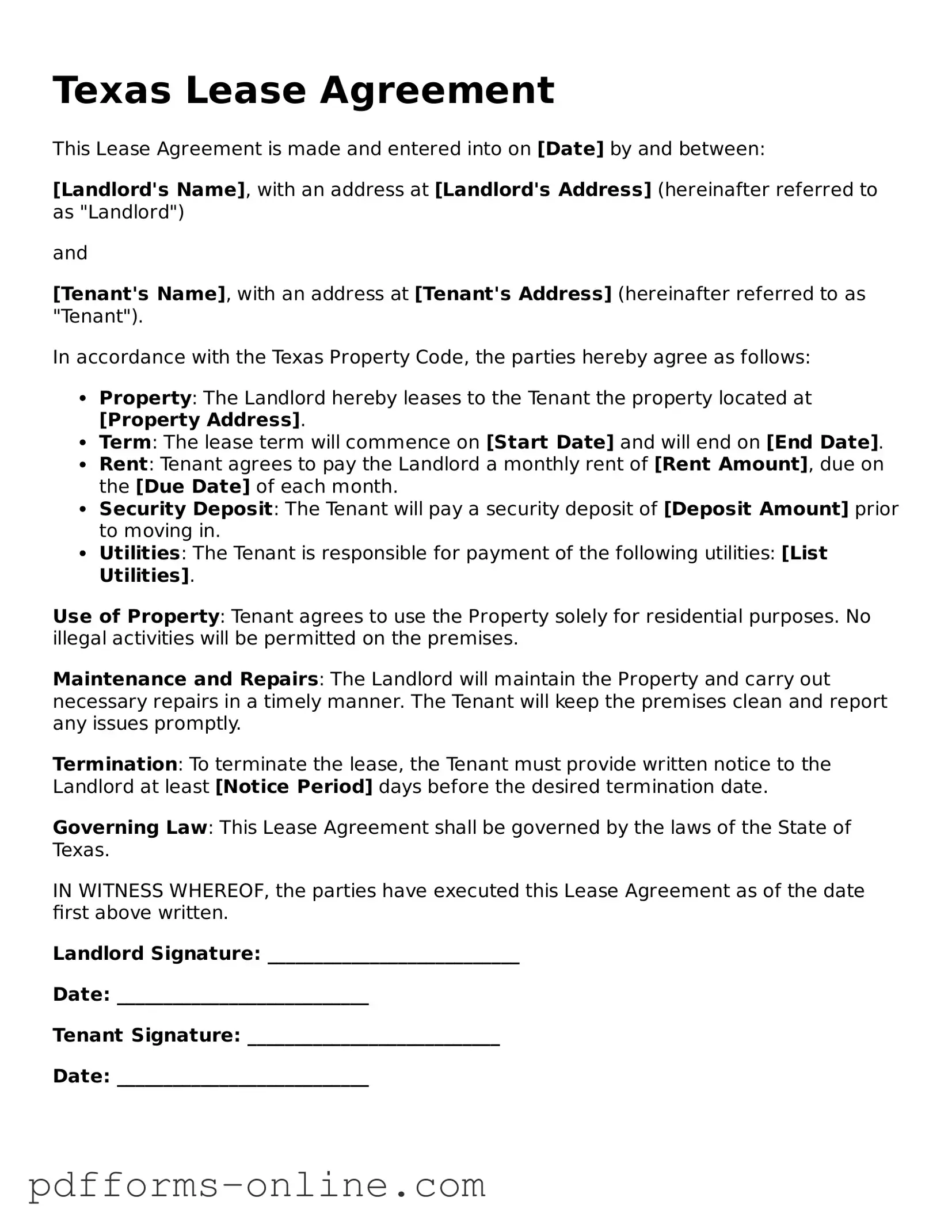The Texas Rental Application is a document that helps landlords screen potential tenants. It collects personal information, employment history, and rental history. Just like the Texas Lease Agreement, it outlines the responsibilities of both parties, ensuring that the landlord has the necessary information to make informed decisions. This document serves as a preliminary step before entering into a lease agreement.
The Texas Month-to-Month Lease Agreement offers flexibility for both landlords and tenants. Similar to the standard lease, it details the terms of rental, including payment amounts and due dates. However, it allows either party to terminate the agreement with proper notice. This document is ideal for those who may not want a long-term commitment but still require a formal agreement.
The Texas Commercial Lease Agreement is tailored for business properties. Like the residential lease, it outlines the terms of occupancy, rent, and responsibilities. However, it includes additional clauses specific to commercial use, such as maintenance of business equipment and compliance with zoning laws. Both documents protect the interests of the landlord and tenant while specifying their obligations.
The Texas Sublease Agreement allows a tenant to rent out their leased property to another person. This document is similar to the Texas Lease Agreement in that it includes terms of rent and responsibilities. However, it must also address the original lease terms and whether subleasing is permitted. It ensures that both the original tenant and the subtenant understand their rights and obligations.
The Texas Lease Termination Letter is a formal notice that either party can use to end a lease agreement. This document is similar in purpose to the Texas Lease Agreement, as it outlines the conditions under which the lease can be terminated. It ensures that both parties are aware of the timeline and any necessary actions required to conclude the rental relationship.
The Texas Roommate Agreement is designed for individuals sharing a rental space. It establishes the rights and responsibilities of each roommate, similar to a lease agreement. This document clarifies issues like rent payment, shared expenses, and house rules, helping to prevent misunderstandings and conflicts among roommates.
The Texas Lease Renewal Agreement is used when both parties agree to extend the original lease term. It mirrors the Texas Lease Agreement by reaffirming the terms and conditions of the rental. This document provides an opportunity to make adjustments to the lease, such as rent increases or changes in responsibilities, ensuring both parties are on the same page moving forward.
Understanding the various documents related to lease agreements, such as the documentonline.org/blank-ohio-residential-lease-agreement/, is crucial for both landlords and tenants. Each document plays a significant role in governing the rental relationship, outlining responsibilities, payment terms, and obligations, thereby fostering a harmonious environment for all parties involved.
The Texas Security Deposit Agreement outlines the terms regarding the security deposit. Like the Texas Lease Agreement, it specifies the amount, conditions for return, and reasons for deductions. This document protects both the tenant's interests and the landlord's right to cover damages or unpaid rent, ensuring clarity around financial responsibilities.
